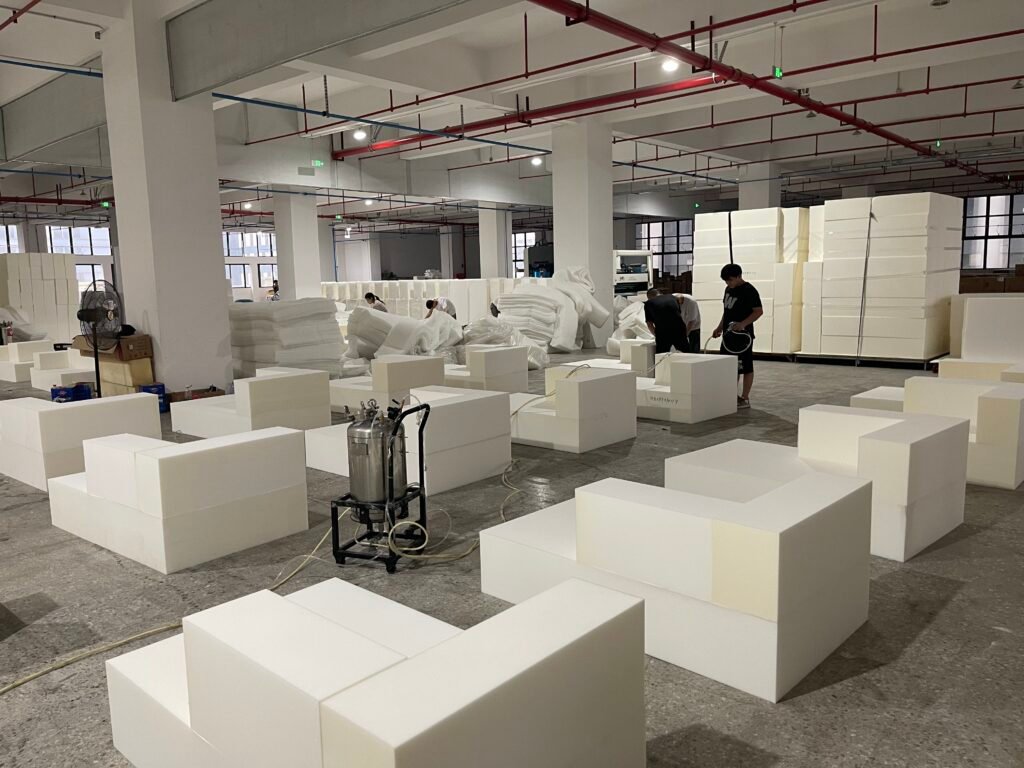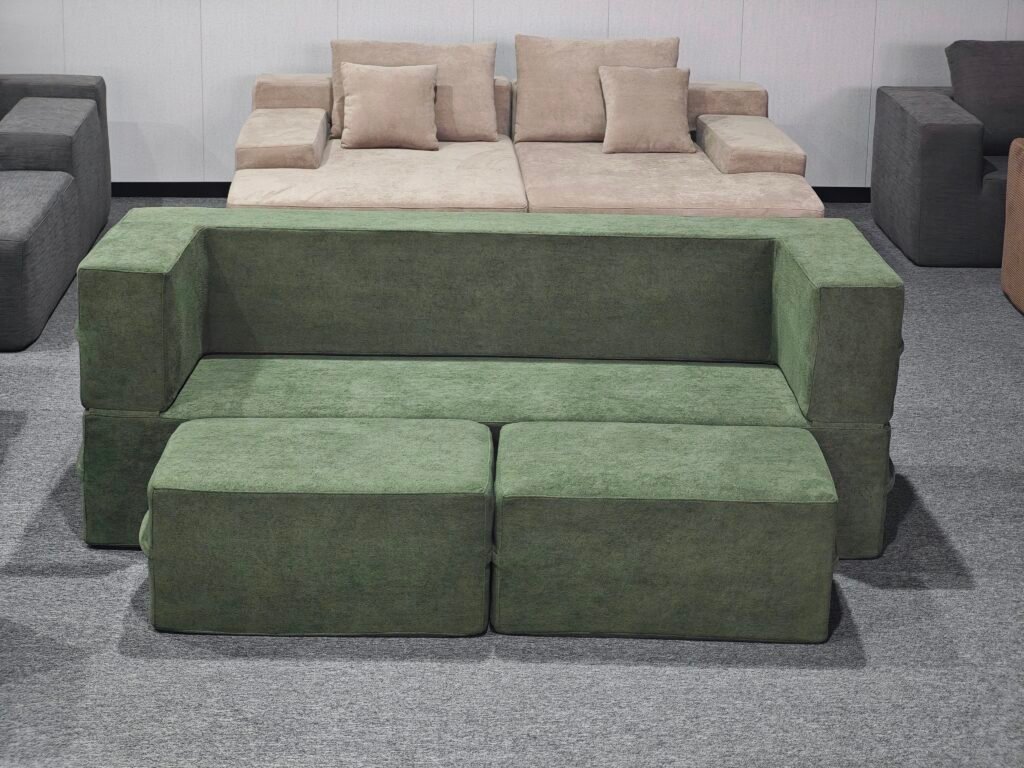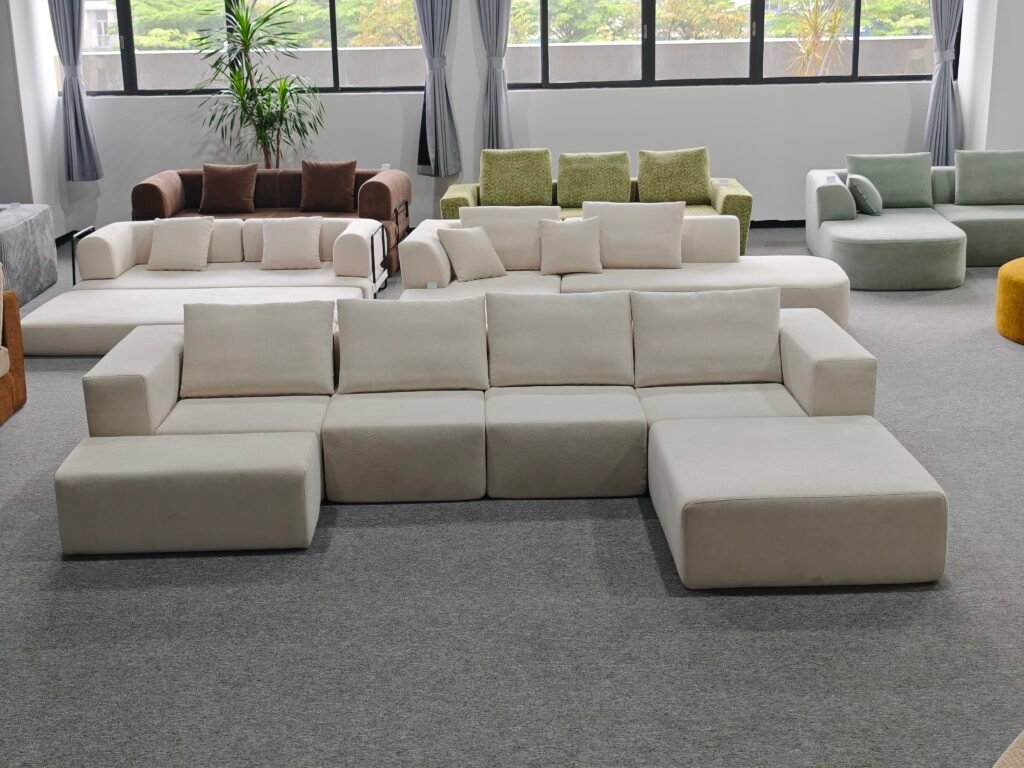The rise of compressed sofa technology has transformed the furniture industry by making sofas far more efficient to ship, store, and assemble. Particularly for a compressed sofa factory like Modular-Sofas.com, understanding and optimizing each stage of the manufacturing process is crucial to delivering quality products that meet modern consumer demands for space-saving, comfortable, and stylish furniture. This comprehensive guide details every step of the compressed sofa production process—from raw material selection to packaging—explaining the expertise and innovation behind the compact, vacuum-sealed sofas increasingly popular worldwide.


Overview of Compressed Sofa Manufacturing
Compressed sofas are designed to be modular, flexible, and capable of withstanding vacuum compression without losing structural integrity or visual appeal. The production involves specialized materials, precise engineering, and controlled processes that together allow sofas to be tightly compressed into small, convenient packages. This approach drastically reduces shipping volume by up to 90%, cutting costs and environmental impact while enhancing consumer convenience.
The following production steps describe the general workflow applied by leading compressed sofa manufacturers, including modular-sofas.com. While variations exist among individual factories, these stages broadly define the industry standard:
| Stage | Process Description | Key Focus |
|---|---|---|
| Material Preparation | Selecting filling, fabric, and frame materials | Quality, durability, appearance, comfort |
| Frame Production | Cutting and assembling sofa frame components | Precision, strength, foldability for compression |
| Filling Preparation | Shaping and processing foam and padding | Comfort, uniformity, resilience to compression |
| Fabric Cutting & Sewing | Cutting fabrics and sewing sofa covers | Fit, stretchability, durability |
| Assembly | Inserting filling into covers and attaching to frame | Secure fit, stable structure |
| Compression Treatment | Vacuum packing and compressing sofas | Controlled pressure and timing to prevent damage |
| Packaging & Shipping | Sealing and labeling compressed sofas | Protection, logistics efficiency, user-friendly unpacking |
This step-by-step breakdown explores each stage in detail, explaining how modern compressed sofa factories integrate advanced techniques and materials to meet customer expectations.
Material Preparation
The first and perhaps most critical phase in compressed sofa manufacturing is material selection and preparation. Since compressed sofas must endure the stresses of vacuum compression and decompression, the choice of materials directly influences the comfort, durability, and compressibility of the finished product.
- Filling Materials: Advanced foams such as memory foam, high-resilience polyurethane foam, latex, or in some cases down or synthetic fiber fillings are selected based on their ability to compress without permanent deformation and provide comfortable support after unpacking.
- Fabric: Fabrics must be breathable, wear-resistant, and capable of stretching to accommodate compression. Typical choices include cotton, linen, velvet, microfiber, corduroy, and innovative blended textiles with elastic properties.
- Frame Materials: Frames are usually made of lightweight metals like steel or aluminum or engineered wood composites, optimized for durability and foldability to allow the sofa to compress effectively.
Raw materials undergo rigorous quality control to ensure consistency. Fabrics are inspected for tensile strength and abrasion resistance, foams are tested for density and resilience, and frames are checked for weld strength and flexural capacity.
Frame Production
The sofa frame acts as the skeleton, providing shape and support. For compressed sofas, frame design must balance rigidity with flexibility, allowing parts to fold or disassemble for compression without damage.
- Cutting and Shaping: Frame components are cut to precise dimensions based on design blueprints, either by CNC machines for metal or by automated saws for wood.
- Assembly: Components are welded or screwed together adhering to modular principles. Hinges, foldable joints, or quick-release connectors are incorporated to enable collapsing or segmenting of the frame.
- Surface Treatment: Frames undergo sanding, powder coating, painting, or anti-corrosion treatments to enhance durability and aesthetics.
Some compressed sofa designs integrate soft or protective padding directly onto the frame at stress points to minimize damage during compression cycles.
Filling Preparation
Foam and other filling materials are prepared and shaped to align with each sofa model's ergonomic design and compression specifications.
- Cutting and Shaping: Large foam blocks are cut using hot-wire cutters or CNC machines into backrest, seat cushions, armrests, and other components. The shaping ensures uniform thickness and contour.
- Compression Enhancement (Optional): Some manufacturers pre-compress certain foam parts during filling preparation to improve their vacuum compression behavior.
- Quality Checks: Fillings are inspected for density variance, surface defects, and resilience to repeated compression-expansion cycles.
This phase ensures the sofa will maintain comfort and appearance after decompression by the end user.


Fabric Cutting and Sewing
The fabric covers that encase the sofa fillings are critical for aesthetics, comfort, and withstanding compressed packaging.
- Pattern Design: Based on sofa shape and dimensions, cutting patterns are created using CAD software to optimize fabric use and account for stretch zones.
- Cutting: Automated or manual cutting machines slice fabrics precisely following the pattern.
- Sewing: Skilled workers or automated sewing lines assemble fabric pieces into covers fitted for each sofa segment including cushions, covers for the frame, and detachable parts.
Elasticity and tensile strength tests ensure the covers will comply with folding and compression demands. Seam reinforcement and finishing treatments (e.g., stain resistance) enhance product lifespan.
Assembly
After preparation of frames, fillings, and fabric covers, the sofa assembly phase combines these components.
- Filling Insertion: Foam pieces are carefully inserted into their corresponding fabric covers. This step is delicate to avoid damaging foam edges or fabric seams.
- Fitting to Frame: The filled covers are secured onto the folded or assembled frame by zippers, Velcro, clips, or stretch fitting. Attention is paid to achieve a snug, smooth surface without loose fabric or irregular lumps.
- Inspection: Final inspection ensures the sofa meets dimensional specifications, comfort standards, and that all components are securely attached.
This stage is crucial to guarantee that the sofa functions properly during compression and after unpacking.
Compression Treatment
The defining step in producing a compressed sofa is the vacuum compression process, where the sofa is compacted to reduce its shipping volume.
- Professional Compression Equipment: Specialized vacuum chambers and hydraulic presses are used to carefully compress the sofa.
- Controlled Pressure and Timing: Pressure levels and compression duration are monitored precisely to prevent permanent deformation or damage to foam and fabrics.
- Vacuum Sealing: Once compressed, the sofa is inserted into strong, airtight plastic packaging and vacuum-sealed. This greatly reduces air volume inside the package, keeping the sofa tightly compressed for extended storage and transport.
The process often involves rolling or folding the compressed sofa into a compact box, simplifying logistics.
Packaging and Shipping
The final step ensures the sofa reaches customers safely and intact.
- Packaging Materials: High-quality plastic bags protect against moisture and dirt, while sturdy cartons or customized boxes provide external protection.
- Labeling: Packages are clearly marked with size, weight, material composition, handling instructions, and product details to ensure smooth logistics and ease of customer identification.
- Logistics Optimization: Packaged compressed sofas are prepared for shipment using space-efficient stacking and loading strategies, minimizing freight costs.
Once received, customers benefit from easy unpacking and quick sofa expansion to original size, accompanied by instructions for setup and care.
Detailed Production Process Table
| Production Stage | Description | Purpose and Key Notes |
|---|---|---|
| Material Preparation | Selection and quality control of foams, fabrics, and frame materials | Guarantees comfort, durability, and compressibility |
| Frame Production | Precision cutting, welding/assembly of foldable/ modular frames, surface finishing | Provides structural support and allows compression |
| Filling Preparation | Cutting, shaping, pre-compression (optional) of filling materials | Ensures uniformity and resilience after compression |
| Fabric Cutting & Sewing | Pattern designing, fabric cutting, sewing sofa covers | Produces flexible, durable coverings compatible with compression |
| Assembly | Inserting foam fillings into covers, fitting covers to frame, quality inspections | Creates finished sofas that withstand compression cycles |
| Compression Treatment | Vacuum compression, rolling/folding, and sealed packaging using specialized equipment | Reduces shipping volume, protects sofa during transport |
| Packaging & Shipping | Protective packaging in plastic and cartons, labeling and transport preparation | Ensures product protection and ease of delivery |
Modular-Sofas.com’s Commitment to Excellence in Compressed Sofa Manufacturing
At Modular-Sofas.com, the core competency lies in marrying modular design with cutting-edge compressed sofa technology to deliver adaptable, stylish, and space-efficient furniture. Leveraging modern manufacturing methods and stringent quality controls outlined above, the company ensures each sofa combines aesthetics, comfort, and durability, all while being easy to transport and set up.
Modular-Sofas.com continuously innovates in materials research, eco-friendly fabric use, and compression techniques to remain at the forefront of the compressed sofa factory sector. By optimizing each production step and adopting sustainable practices, the company meets the demands of evolving urban lifestyles while minimizing environmental impact.


Environmental and Market Impact of Compressed Sofa Manufacturing
Compressed sofa manufacturing yields significant environmental benefits by reducing the volume of goods shipped globally, lowering transportation emissions, and minimizing packaging waste through efficient design. This aligns well with growing consumer demand for sustainable and eco-conscious products.
Economically, compressed sofas open new market possibilities, especially in urban areas with limited space and for e-commerce furniture retailers needing affordable shipping methods. The manufacturing process reflects a balance between innovation, craftsmanship, and scalability, contributing to the furniture industry's transformation in the 21st century.
Conclusion
Compressed sofa manufacturing encompasses a precise blend of material science, engineering, craftsmanship, and logistics optimization. Starting from the thoughtful selection of foams, fabrics, and frame materials, through modular frame design and advanced sewing techniques, to controlled vacuum compression and protective packaging, the entire process is engineered for efficiency, durability, and consumer convenience.
Factories like Modular-Sofas.com exemplify these advances, producing high-quality compressed sofas that cater to modern market needs. As compressed sofa technology continues to evolve, it promises to reshape furniture production, delivery, and living spaces worldwide by making stylish comfort accessible, compact, and sustainable.